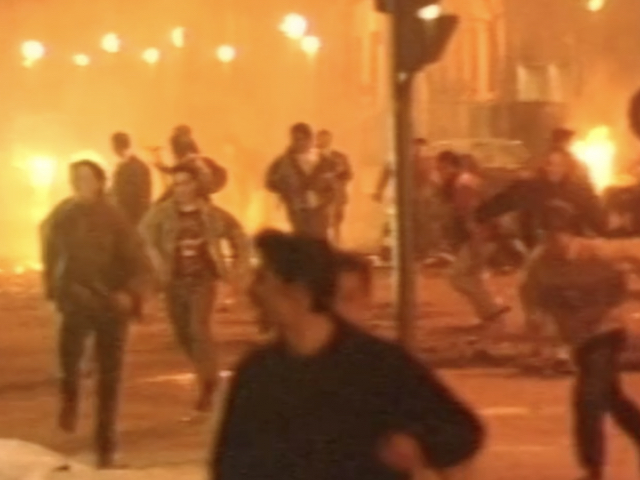
In the pivotal year of 1992, Spain celebrated both the Olympic Games in Barcelona and the quincentenary of Columbus’s arrival in the Americas – and ushered in a new age of neoliberalism and economic restructuring. Shot on Hi-8 videotape entirely within a typically smoky Spanish snack bar in the city of Cartagena in Murcia – with occasional interruptions from the archive in the form of propagandistic news bulletins and TV commercials.
EN
“Cinematographer Isabel Gallego Grau’s images are presented via the old-school Hi8 video format, with split-screen the norm. Given the exposition of the prologue, the look of the film, the clothing and hairstyles of the participants, plus the fact that nearly everyone’s smoking in the bar (banned in Spain since 2011), we presume that we’re seeing archival footage from 1992 shot by some contemporary TV station. Just before the hour mark, however, one interviewee’s comments about chronology and money (he mentions the Euro, which Spain didn’t adopt until 2002) indicate that something more complex is afoot.”
Neil Young1
“I had a feeling I needed to make a second film about this era, because in the end El Futuro was like a game, showing the ‘80s as a celebration of the middle class, which is one way of thinking back on the decade. But a lot of social groups have disappeared from movies and media and they’ve disappeared not because they became middle class, but because no one cared – mainstream literature and film stopped paying attention. In the ‘70s there were a lot of pluralistic approaches to portraying different social groups in movies. But in the 1980s the documentary, for example, disappeared from Spanish production. Industrialization affects millions of people in many professions all across Spain. [...]
Some of the collective moments during the audition process were shot with two cameras, and at one point by chance my assistant editor put two monitors together so we could look at the footage. From the very first day of shooting we decided to explore the possibility of split-screen. We edited the same sequences on one screen and two screens and from there started to consider what we were gaining and what we were losing by using split-screen. One of the reasons I was interested in this technique was because a lot of the film came to me while I was eating breakfast at this bar, listening to multiple conversations at once. With split-screen I had the feeling that the space could expand. Having several points of view occurring simultaneously allows for an immersive experience. We didn’t want to use many jump cuts; this way of working with time was another objective.”
Luis López Carrasco in conversation with Jordan Cronk2
- 1Neil Young, “The Year of the Discovery (El ano del descubrimiento): Film Review Rotterdam 2020,” The Hollywood Reporter, January 26 2020.
- 2Jordan Cronk, “Daydream Nation: Luis López Carrasco on The Year of the Discovery,” Mubi Notebook, October 6 2020.

